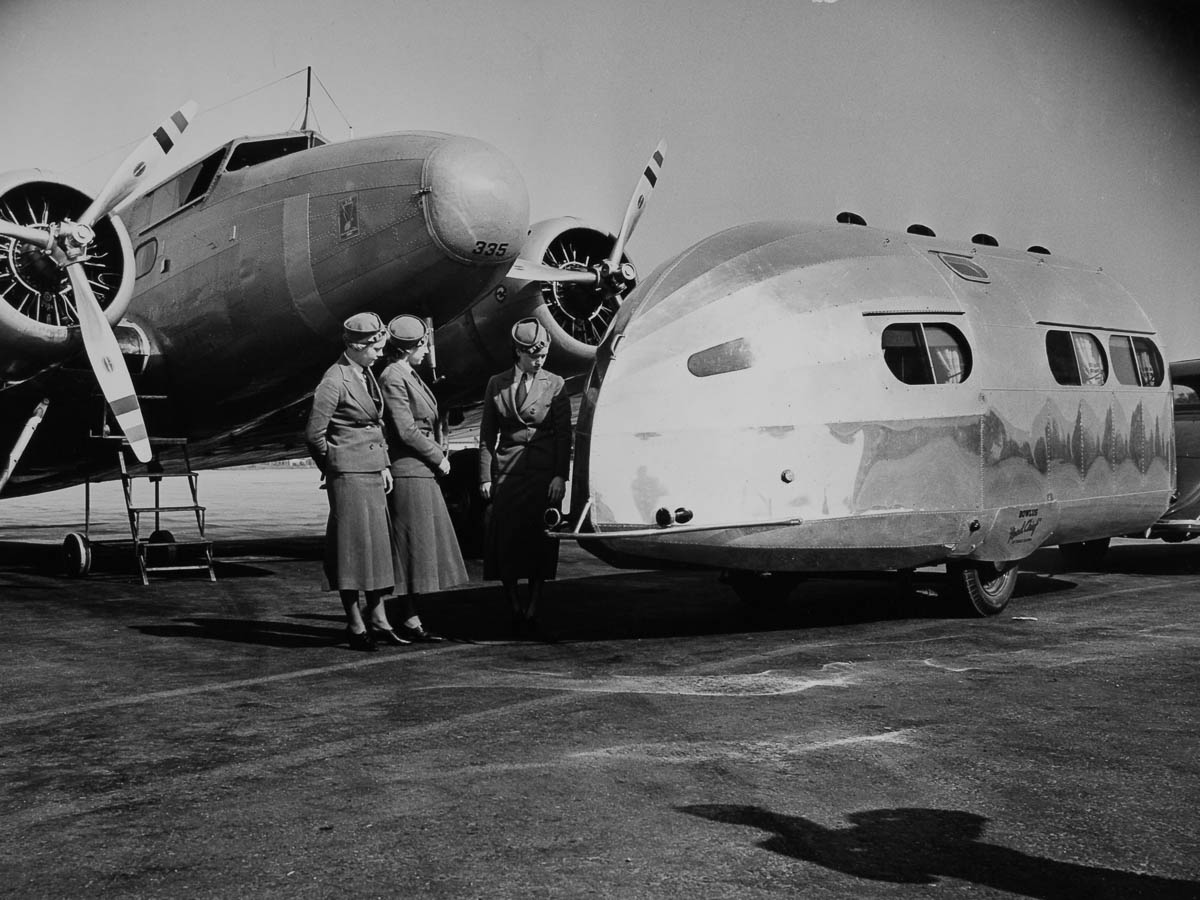Conversations with People We Value #11
A few years back I had been asked to judge at a local Concours d’Elegance. I envisioned strolling across lovely grounds viewing a field of beautiful cars. What fun! My judging assignment included an aircooled class comprised primarily of Volkswagens. More fun!
Judging criteria for this concours would employ “French Rules.” Compared to the judging at marquee club events (Porsche Club, Corvette Club) where the wrong oil breather cap can hurt your score, French Rules lean more on aesthetics.
With French Rules, visual impact more than technical authenticity holds sway. Additional attributes that merit judgments of worthiness include a car’s condition, authenticity, originality, quality of restoration, rarity, and historical importance. Basically French Rules creates a personal opinion beauty contest with the benefit of a few qualifiers to assist judges in thin slicing degrees of excellence to substantiate the choice of a winning car. I had no idea that I was about to face the challenge of thin slicing with a scalpel.
My partnering judge and I approached our subject cars and immediately recognized the challenge. With late 1950s being the newest model year, a splendid array of highly desirable VW Beetles awaited our scrutiny. It could only be compared to judging a beauty contest with the five finalists being striking identical quintuplets.
Each of the five VW Beetles enjoyed exquisite restorations featuring superb aesthetics clearly executed with an artist’s eye. All five Beetles showcased the craftsmanship of the same man. His name? Chris Vallone.
VW bug restoration is no joke. Ask Jerry Seinfeld
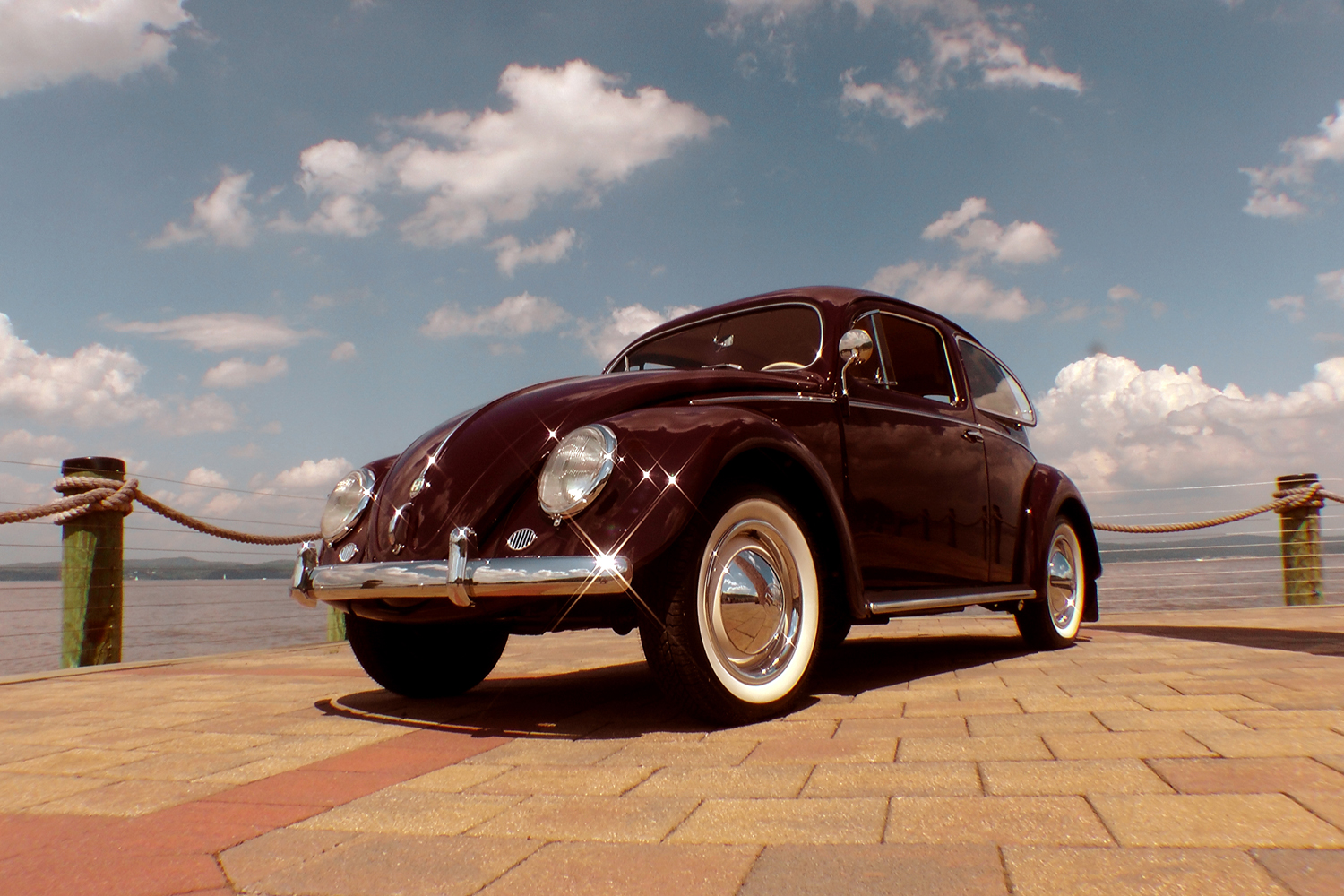
Being an accomplished independent film maker with a background in cartooning and fine art seems an unlikely route to becoming recognized world over for producing mechanically superior and aesthetically refined Volkswagen Beetle restorations.
“I was living my dream,” says Chris Vallone, founder of Classic VW Bugs, Inc. in Congers New York. For ten years after earning his degree, Chris wrote, directed, shot, produced and edited his own independent films. “Action films, horror films, that sort of thing,” says Chris. He achieved a degree of success with one of his films being picked up for distribution internationally. However, recognition does not necessarily equate to financial success.
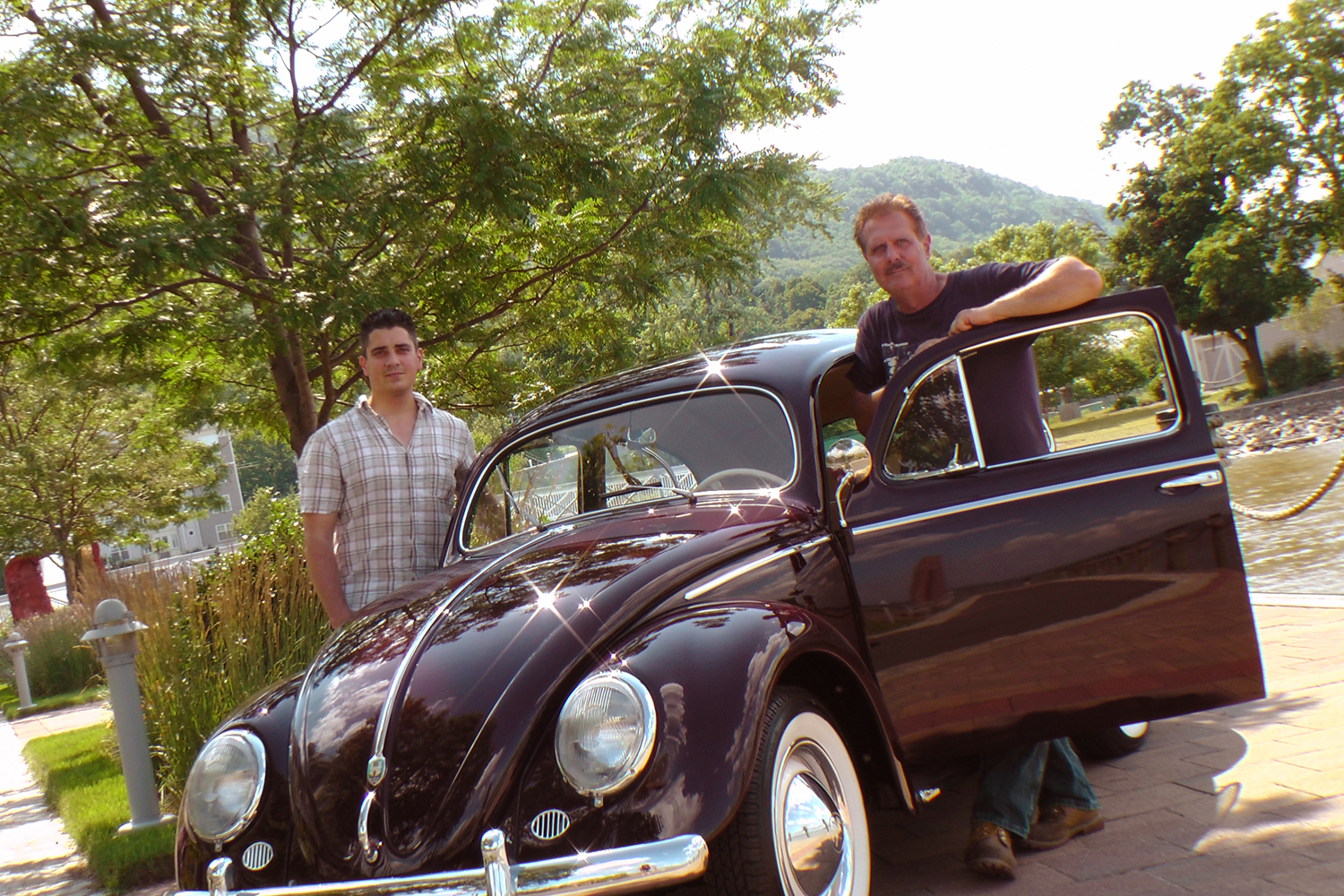
Chris and father with award winning 1952 split window
In the background during the decade dedicated to advancing his career in film making, Chris enjoyed a hobby defined by maintaining his 1968 Volkswagen. “Honestly, I loved the image of the artist throwing his gear in his VW bug and pursuing his passion,” says Chris.
In life as in a good film, inflection points occur that force a dramatic change in the action. Chris’s life plot took a major turn when the monetary demands of distributing a film exceeded his financial reach. Translation, Chris found himself broke and in debt. “The whole starving artist thing,” says Chris.
“I realized that my Hollywood aspirations should be pushed to a back burner,” Says Chris. Actually Chris pushed the Hollywood idea right off the stove. “As I approached my late 20s, I realized that I needed to get serious about making a decent living to survive,” says Chris. Step one called for eliminating my debts.
Chris’s hobby came to the rescue. He would sell the 1968 VW he had restored. He used his filmmaking skills to showcase the Bug on eBay. This happened way before video became a staple on Bring-a-Trailer.com auctions. It was way before BaT existed.
His VW quickly sold to a buyer from Cincinnati, Ohio. Chris says, “This floored me because I grew up in a world where everything happened locally. What an eye opener for me.” This was around 2003.

AFTER – 1956 Ragtop

BEFORE -1956 Ragtop
Chris’s father, Chris Vallone senior, saw an opportunity saying “We got something here.” And indeed they did. Chris senior had decades as an experienced mechanic. Chris junior possessed an artist’s eye for visual interior and exterior executions. Their blended talents would combine to impart a unique and striking signature look to their future creations.
Working out of their home’s one-car garage, they would first rebuild a VW Bug to use and then sell it. However, within a year Chris decided to buy a Beetle with the sole intent of restoring and flipping it. Son and father went all in. With the VW Bug completed, Chris created a full blown sales video with music, titles and effects and posted it on eBay.
Incredulously Chris says, “We had people come to our house, knock on the door and ask us to end the auction saying “I want to buy it now.” Time for another inflection point.
In a move of profound significance, Chris redirected his marketing media skills to a new platform, YouTube. He now employed his talents to fully orchestrate traditional and social media platforms. That’s when it happened. People began calling. Interested customers no longer wanted to bid on a VW Bug Chris put up for auction. They wanted Chris to build one just for them. Chris says, “I never ever thought of doing that.”
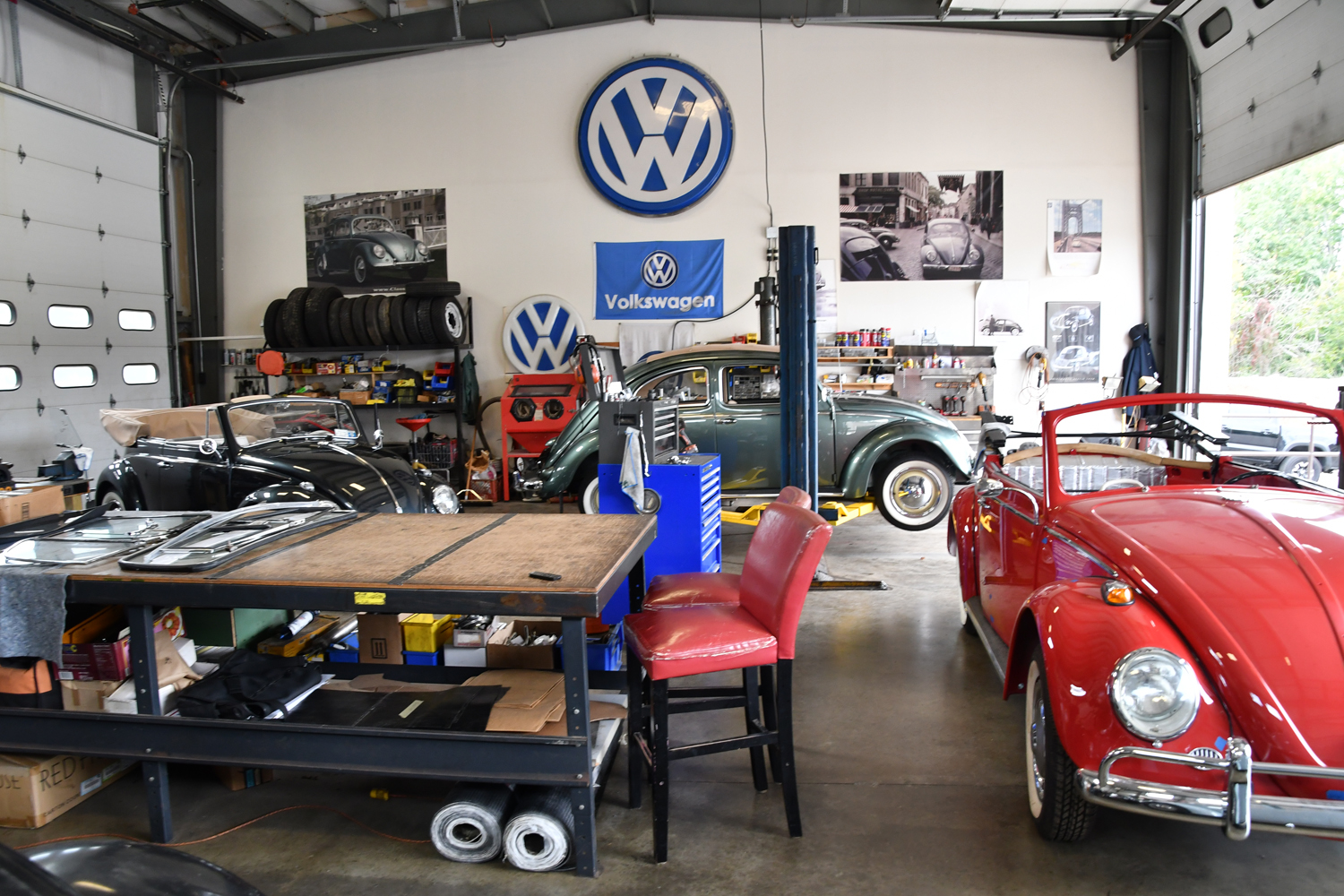
Classic VW Bugs facility
Chris pivoted his business to embrace the custom Build-a-Bug philosophy. Classic VW Bugs, Inc. was born. Chris had discovered a niche within a niche populated with people in their fifties to seventies possessing the money to have their VW Bug professionally restored with a visual character attuned to their tastes.
Clearly, having outgrown the garage, son and father took a deep breath, swallowed their trepidations and leased a significantly larger commercial space. Game on.
Despite launching Classic VW Bugs at the dawn of the Financial Crisis, Chris has never looked back. Counter intuitively, as the stock market collapsed, his business grew. Chris explains this saying, “People buying our cars were primarily investors or collectors who wanted to add to their collection. They viewed our restored VW Bugs as an appreciating asset.”
While the sweet spot of the buyer demographic presently rests in the fifty to seventy age range, Chris has witnessed a surge of interest by those in their thirties and forties.
 Chris sees this trend inspired by a motivation quite different from say the muscle car or resto-mod markets. He says, “To a significant degree it is nostalgia driven.” Chris senior says, “People’s youthful personal experiences wove the Beetle into the fabric of their soul. It remains there today.”
Chris sees this trend inspired by a motivation quite different from say the muscle car or resto-mod markets. He says, “To a significant degree it is nostalgia driven.” Chris senior says, “People’s youthful personal experiences wove the Beetle into the fabric of their soul. It remains there today.”
When asked about the pivotal moment when Chris realized that Classic VW Bugs, Inc. had arrived as a presence in the international Beetle restoration community, he did not hesitate. “When Jerry Seinfeld walked through the door,” says Chris.
About seven or eight years ago, Chris answered a call from a guy introducing himself as Jerry Seinfeld. He wanted to discuss a prospective Beetle restoration. Chris’s initial response was, “Yeh right, who is this?” However, as a big Seinfeld fan, Chris recognized the caller’s intonation. Seinfeld brought a 1956 Beetle requiring significant work to Chris’s shop and hung out for a while to discuss the project.
After taking delivery of the completed Beetle, Chris did not hear from Seinfeld again until 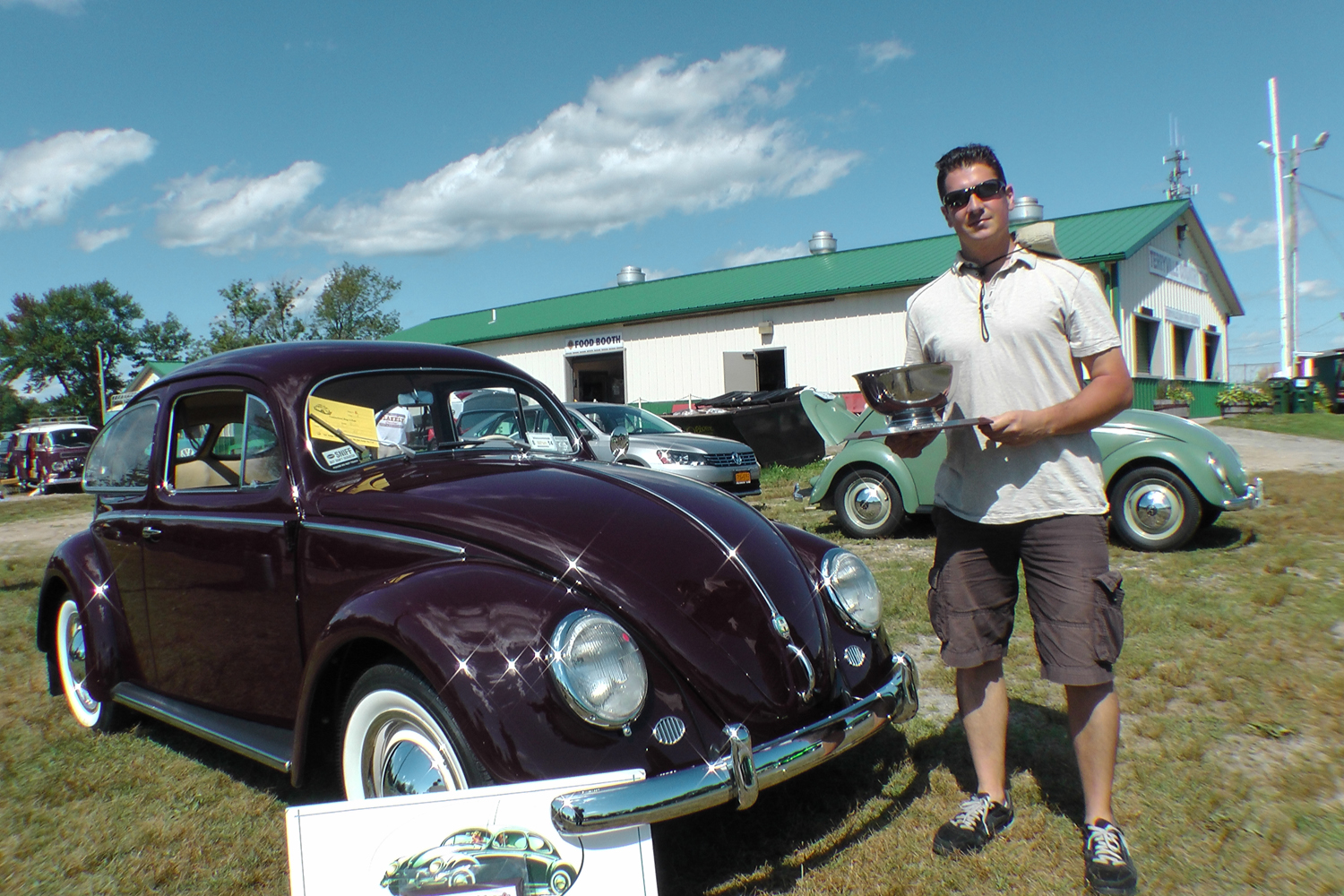 this past summer when a clearly satisfied Seinfeld brought another Beetle to Chris’s shop. Chris took the opportunity to ask Seinfeld how he found Classic VW Bugs. Chris says, “Sure enough it was YouTube.”
this past summer when a clearly satisfied Seinfeld brought another Beetle to Chris’s shop. Chris took the opportunity to ask Seinfeld how he found Classic VW Bugs. Chris says, “Sure enough it was YouTube.”
Chris has posted over 600 videos on YouTube. Every one laser focused on Beetle restoration. He gets over a million hits a month. At times Chris senior will ask his son why he works so hard posting on YouTube. Chris says, “Google searching is the key. I truly believe that if I didn’t do the videos, we wouldn’t have the work.” Twenty percent of Classic VW Bugs business is international, the rest comes primarily from the south and west.” Very little is local.
As the interview approached its conclusion, I called attention to a weathered black VW Bug convertible off on the side that appeared more well used than abused. Chris responded with a look of un-reconciled indecision. Clearly this Bug had a story.
Chris explained, ”It is a 1954 one-owner, all original, numbers matching rare gem. No accidents. Everything lines up perfectly.” Roughly 900 new 1954 Beetles were sold in the U.S. market. Only a few were convertibles.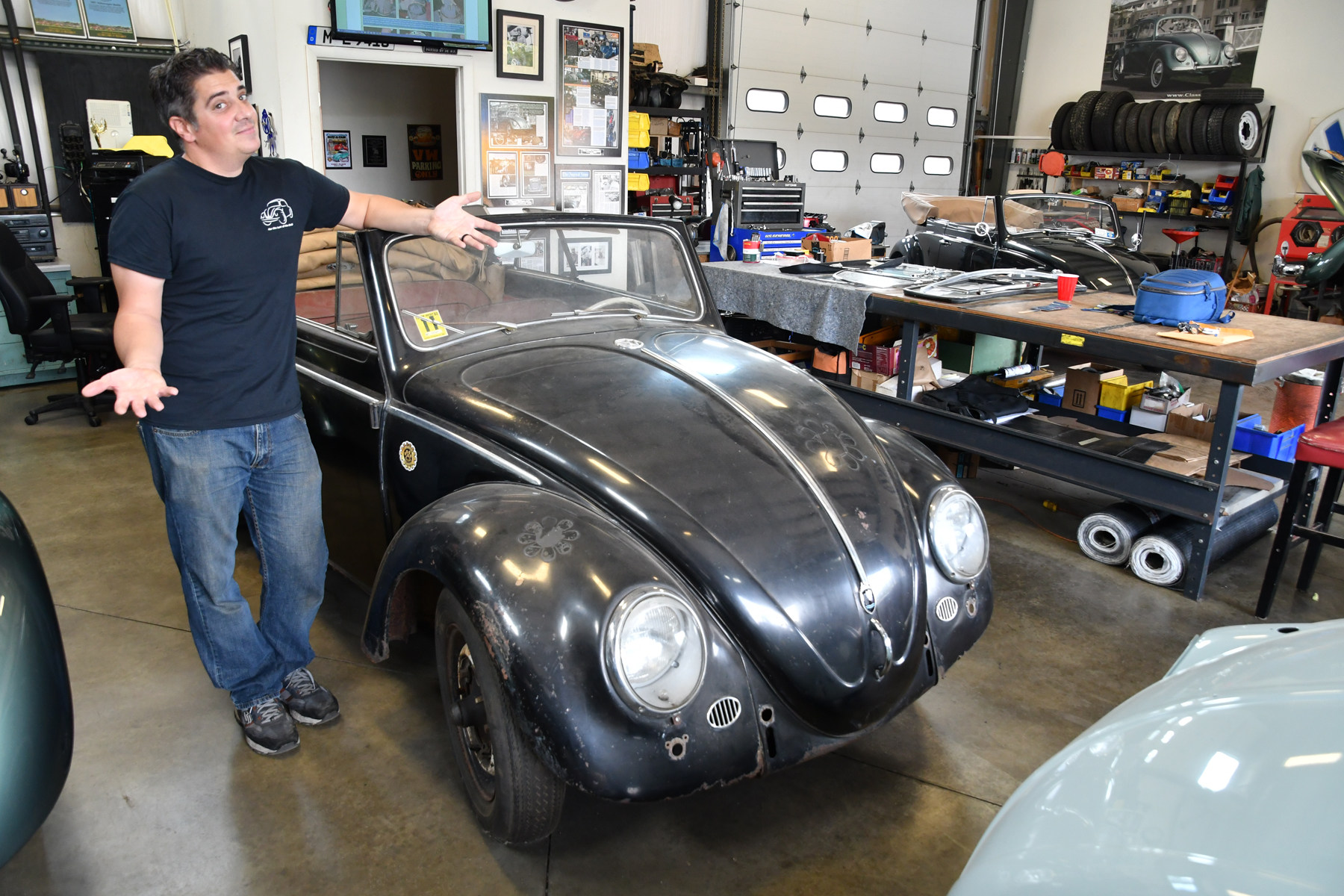
About five years ago Chris got a call from the son of the original owner. He told Chris that he wanted to sell it, but only wanted it to go to a good home. Chris bought it and has wrestled with its fate ever since. Chris says, “I want to restore it and bring it back to its glory.” But then Chris recognizes that it enjoys a glorious patina and is fundamentally sound enough that, with a little structural work, it can be cleaned up and driven as an original. Chris says that he has always wanted a survivor.
What do you think he should do? Should this be the one? Help Chris make up his mind.
Chris will read your comments.
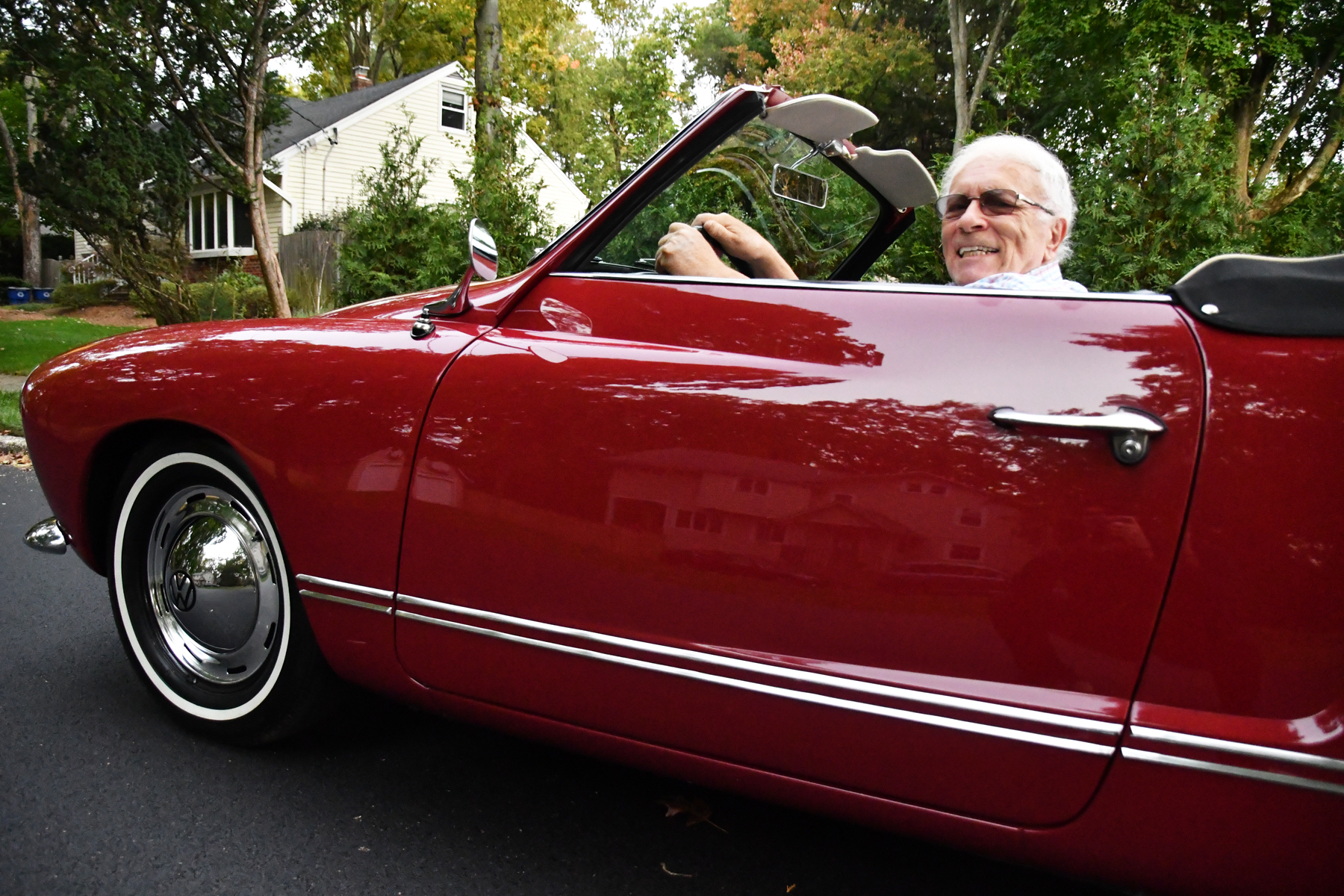


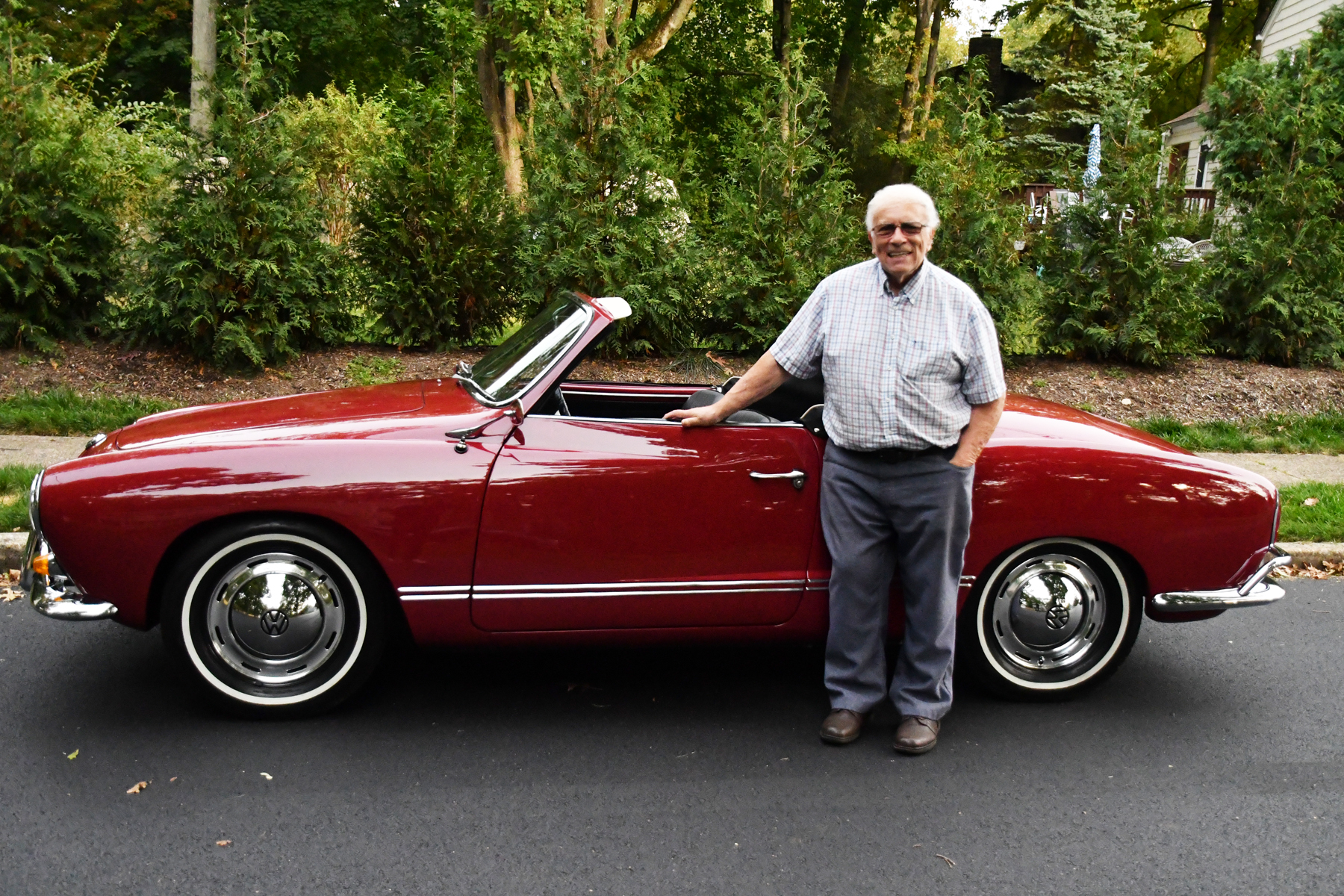
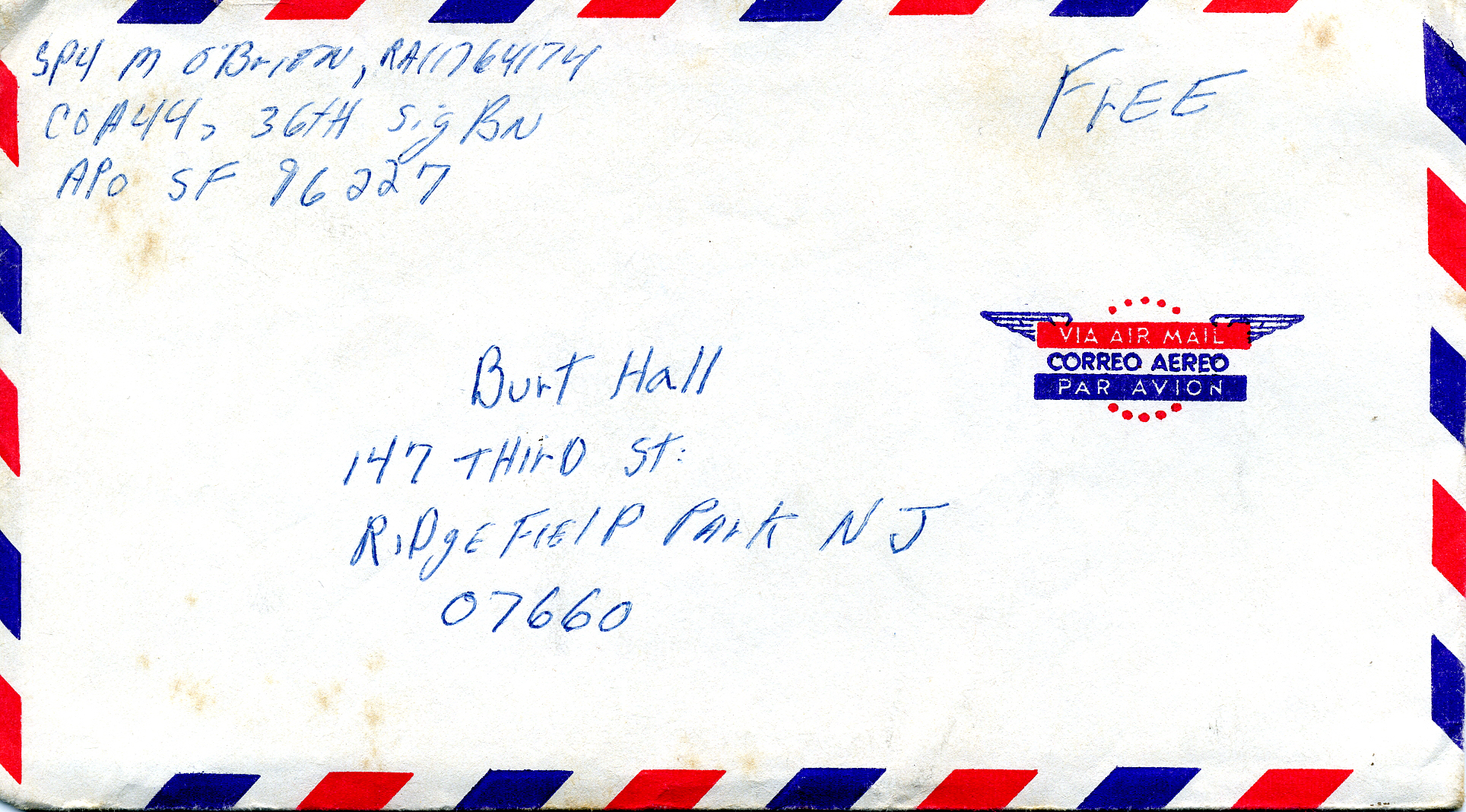

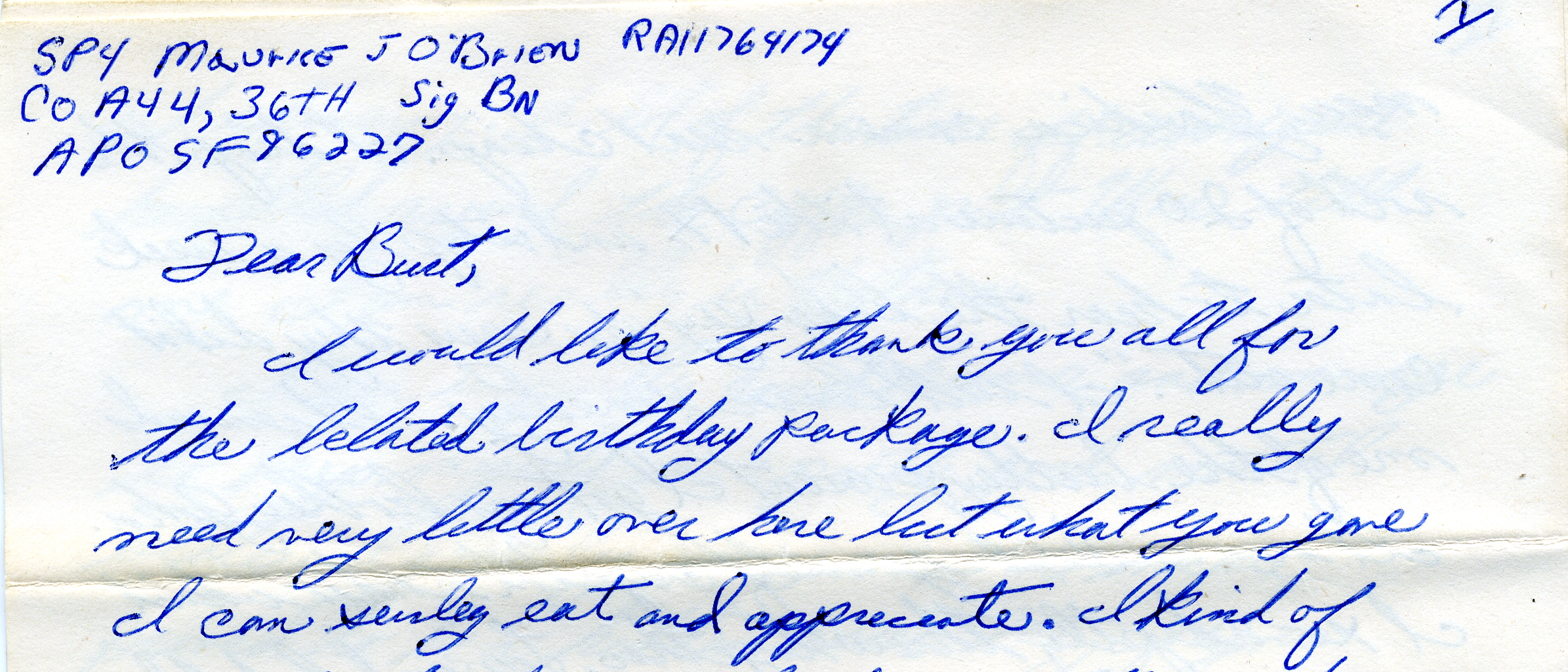 reports in his voice from the engine room of the southeast Asia war machine. Their content expressed details all at once funny, intensely personal and profound in their worldly perspective.
reports in his voice from the engine room of the southeast Asia war machine. Their content expressed details all at once funny, intensely personal and profound in their worldly perspective.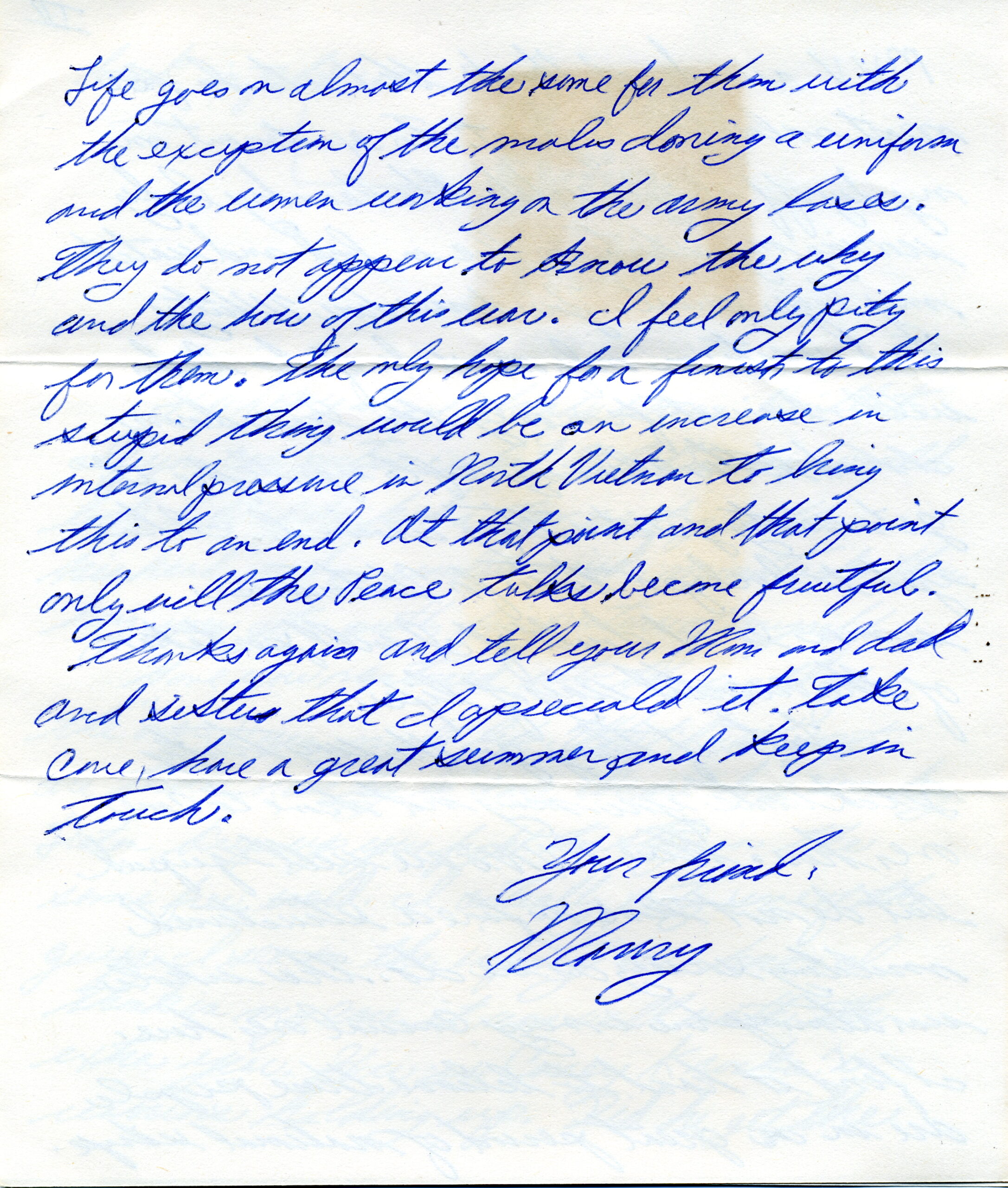 His observations of the world around him in 1969 are worth quoting. He wrote, “I find it hard to believe these people (South Vietnamese) are in a great period of national strife. Life goes on the same for them except the males are donning a uniform and the women work at the army base. They do not appear to know the why and the how of this war. I feel only pity for them. The only hope for a finish to this stupid thing will be an increase in pressure in North Vietnam to bring this thing to an end. At that point and that point only will the peace talks become fruitful.”
His observations of the world around him in 1969 are worth quoting. He wrote, “I find it hard to believe these people (South Vietnamese) are in a great period of national strife. Life goes on the same for them except the males are donning a uniform and the women work at the army base. They do not appear to know the why and the how of this war. I feel only pity for them. The only hope for a finish to this stupid thing will be an increase in pressure in North Vietnam to bring this thing to an end. At that point and that point only will the peace talks become fruitful.”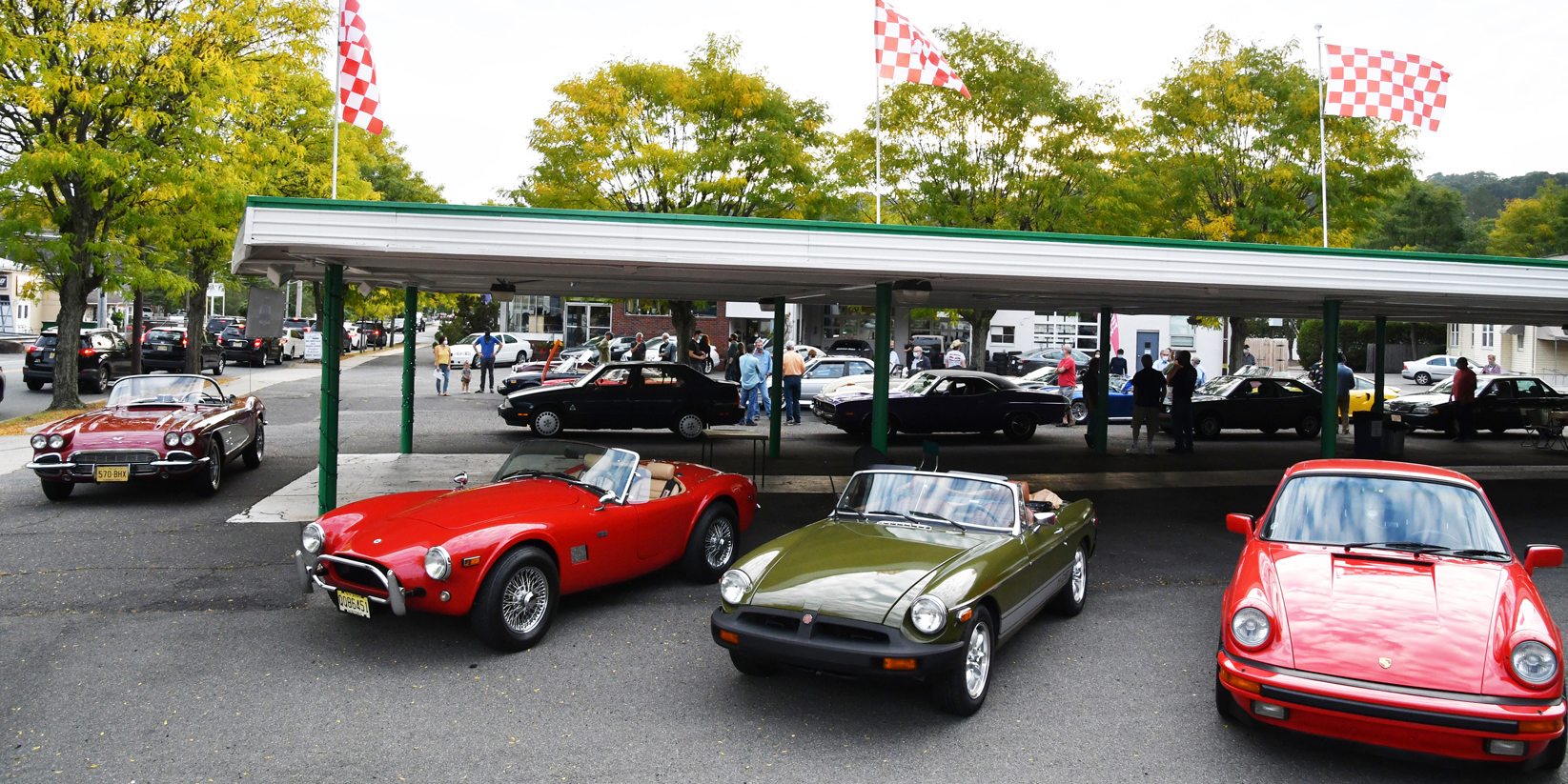

 icturesque ribbon of highway, Route 742 weaved through the rural Piedmont region of North Carolina. My personal directional instincts fortified by happenstance, hope and blind luck (We don’t need no stinkin’ GPS) had once again struck pay dirt.
icturesque ribbon of highway, Route 742 weaved through the rural Piedmont region of North Carolina. My personal directional instincts fortified by happenstance, hope and blind luck (We don’t need no stinkin’ GPS) had once again struck pay dirt.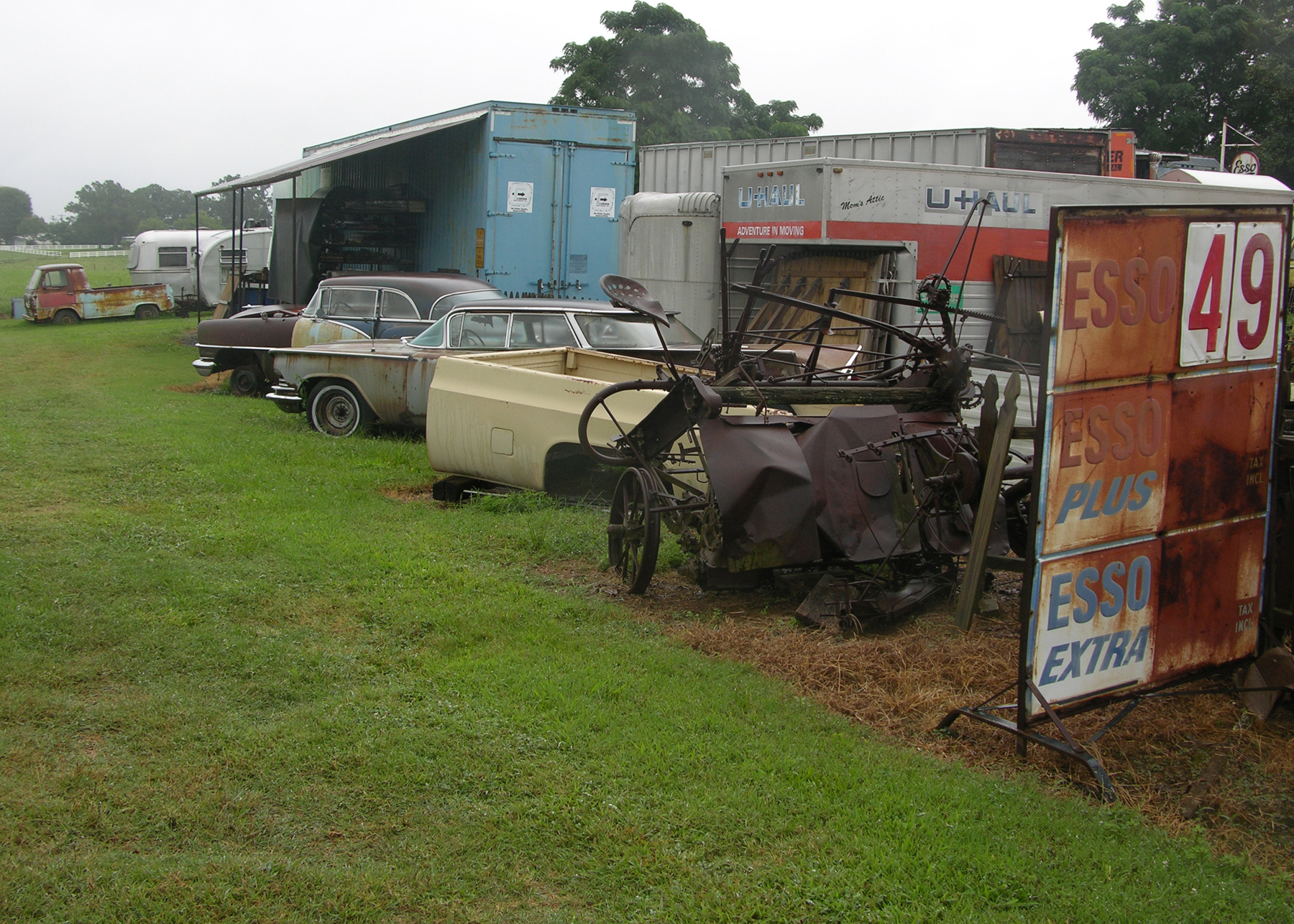 of tangible relics saved from long ago. Affixed to the gate a large “For Sale” sign offered a number for anyone interested. Driving on with this treasure trove of who-knows-what disappearing behind us, we both looked at each other and said, “Let’s call.” By the time we got back to the gate it was open.
of tangible relics saved from long ago. Affixed to the gate a large “For Sale” sign offered a number for anyone interested. Driving on with this treasure trove of who-knows-what disappearing behind us, we both looked at each other and said, “Let’s call.” By the time we got back to the gate it was open.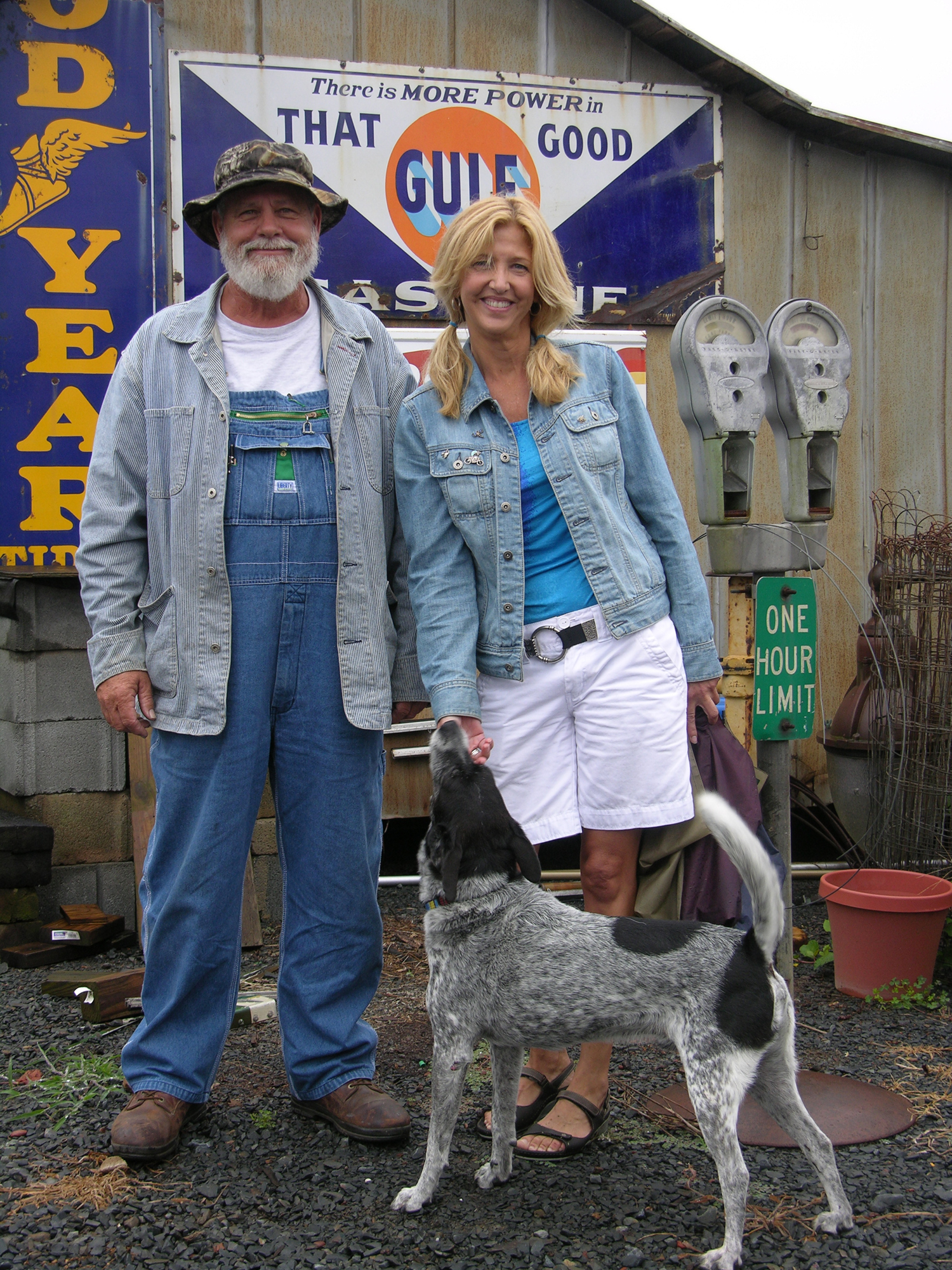 Approaching us with an easy gate, a full bodied man, an avuncular sort greeted us with a friendly welcome delivered with that unhurried regional tone of the Southeast that reminds one that it’s not New Jersey. He introduced himself as Mike Hinson. With a neatly trimmed beard, and a neighborly smile, Mike with his wide brimmed hat and clean bib overalls presented an image of a proprietor rather than a laborer.
Approaching us with an easy gate, a full bodied man, an avuncular sort greeted us with a friendly welcome delivered with that unhurried regional tone of the Southeast that reminds one that it’s not New Jersey. He introduced himself as Mike Hinson. With a neatly trimmed beard, and a neighborly smile, Mike with his wide brimmed hat and clean bib overalls presented an image of a proprietor rather than a laborer.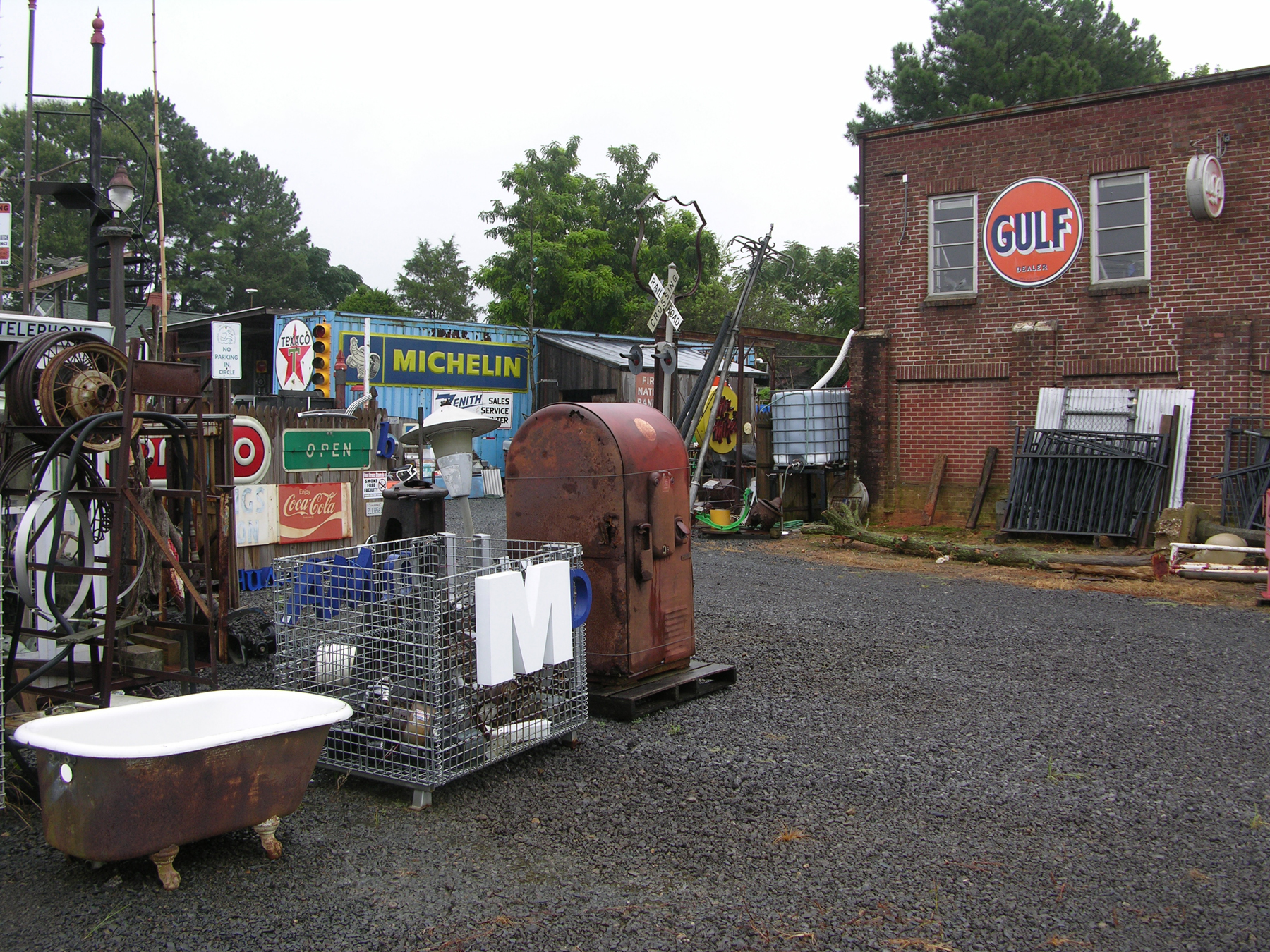
 , “They must have spent a full eight hours here to get the 10 minutes of film they ultimately wanted.” Mike really enjoyed working with Mike Wolfe. “Appearing on American Pickers gave me the best advertising in the world and it did not cost me a penny,” says Mike.
, “They must have spent a full eight hours here to get the 10 minutes of film they ultimately wanted.” Mike really enjoyed working with Mike Wolfe. “Appearing on American Pickers gave me the best advertising in the world and it did not cost me a penny,” says Mike.